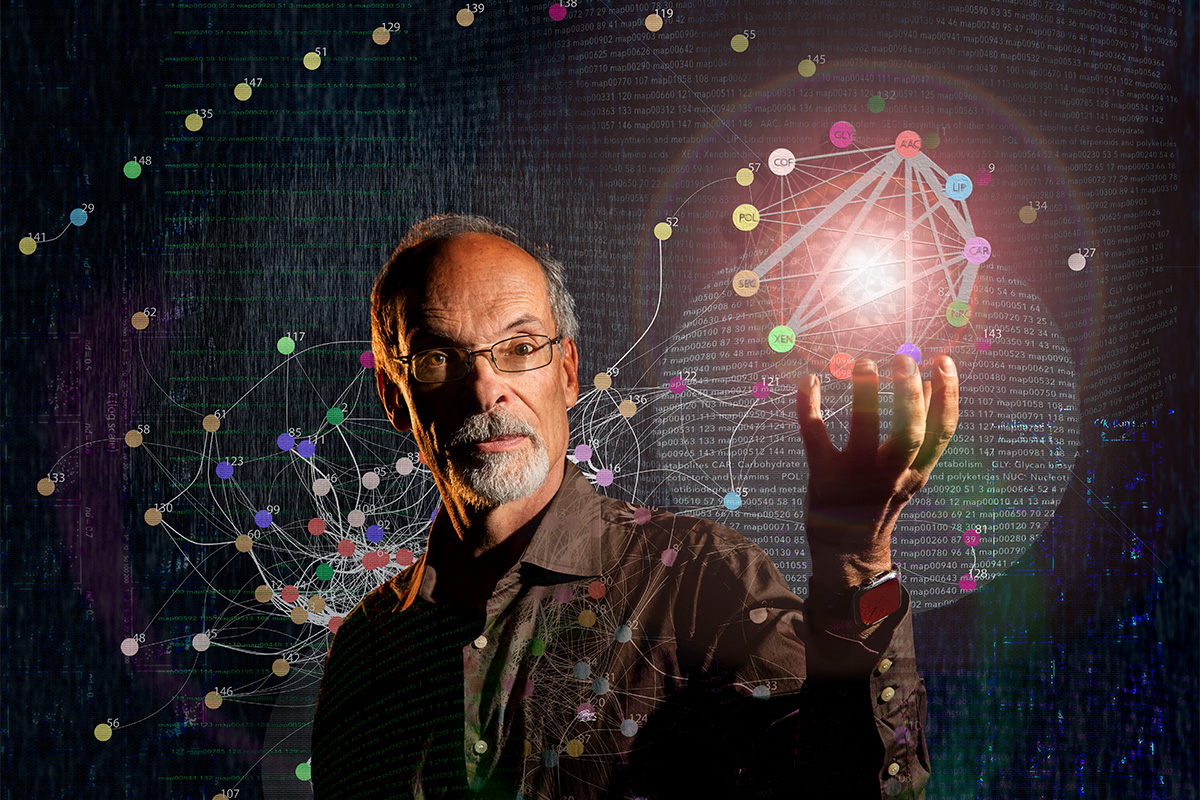By: Diana Yates
By analyzing how metabolic enzymes are built and organized, researchers have reconstructed the evolutionary history of metabolism. Their study shows how metabolic networks – which drive every cellular process from protein building to DNA repair – became less random, more modular and more hierarchical over time, the researchers say.
Their study, published in the journal PLOS ONE, shines a light on the patchwork process that allowed cells to shape the metabolic pathways into what they are today, the researchers report.

“If you’re going to choose a network in biology, metabolism is the most important one,” said University of Illinois crop sciences professor Gustavo Caetano-Anollés, (GEGC) who led the study with graduate student Fizza Mughal. “This network is responsible for negotiating not just matter but also energy – the two elements that are the most fundamental for an organism to work.”
To understand how cells assembled their metabolic networks, the researchers focused on the enzymatic machinery that lies at the heart of these networks. The enzymes promote specific chemical reactions to aid in building the proteins, DNA, RNA, pigments, vitamins, fats, sugars and other molecules that are essential to life. They also support energy generation in cells.
The scientists analyzed the fundamental physical and functional components that contribute to how enzymes work. These components, called “folds,” give proteins the physical characteristics that enable them to work. Folds are like the belts, pistons, gears and other mechanical parts that can be used again and again to build machines with very different functions.
“Folds represent molecular innovations that cells use repeatedly in different contexts,” Mughal said. “By looking at folds across the tree of life, we were able to reconstruct the history of fold families to show how closely or distantly related individual folds are. Like a family tree, this history tells us which fold families are the most ancient, and which have emerged more recently.”
Mughal used this information to color-code the enzymes from known metabolic networks, based on their age. When she plugged the color-coded enzymes into their respective networks to construct a metabolic database known as MANET, she saw that each network was driven by a patchwork of enzymes of different ages.
“This tells us that these networks changed over time,” Mughal said. “Certain enzymes were recruited to do new things in the cell, and older enzymes sometimes fell away and disappeared as they were replaced.”
When the researchers examined how the metabolic pathways had evolved, they saw that early metabolic networks were more random – and probably less efficient – than present-day networks, which gained a more modular and hierarchical configuration. Communities of enzymes emerged, organized into pathways, subnetworks and groups of subnetworks.
This modular hierarchy is a feature of other advanced networks, like the internet or neural networks of the brain, Caetano-Anollés said.
In metabolism, the modularity and hierarchical nature of the network is most prevalent at the enzyme level, he said.
“When you look at higher levels of network organization, the structure becomes more random,” Caetano-Anollés said. “The linkages are weaker. This allows the network as a whole to be more flexible.”
“In this study, we tracked the history of metabolism, step-by-step,” he said. “It was a gradual addition of things that were more and more useful to the cell. This gives us insight into how the machinery of life becomes complex.”
“Biological systems need to be studied holistically because they reflect how nature works,” Mughal said. “No biological agent, from macromolecules to cells to organisms, acts in isolation.”
The U.S. Department of Agriculture National Institute of Food and Agriculture and the National Center for Supercomputing Applications at the U. of I. supported this research.
By: Diana Yates
Photos By: Fred Zwicky


